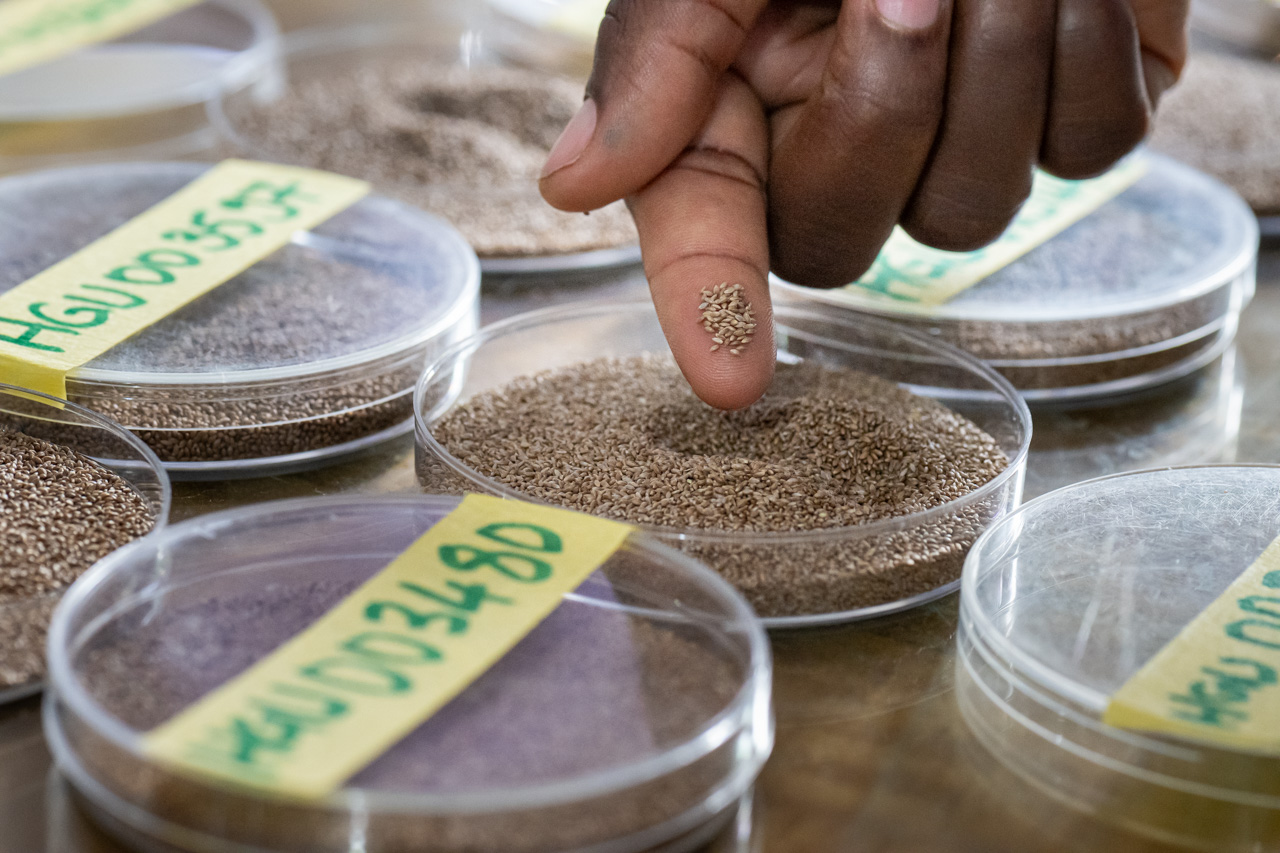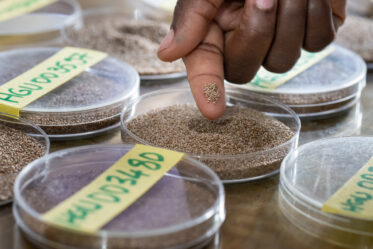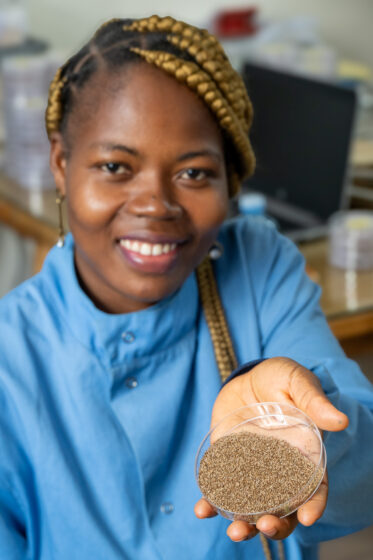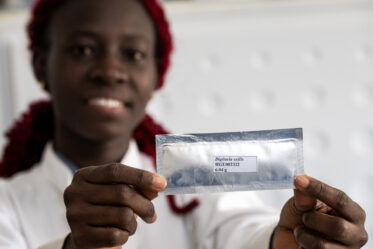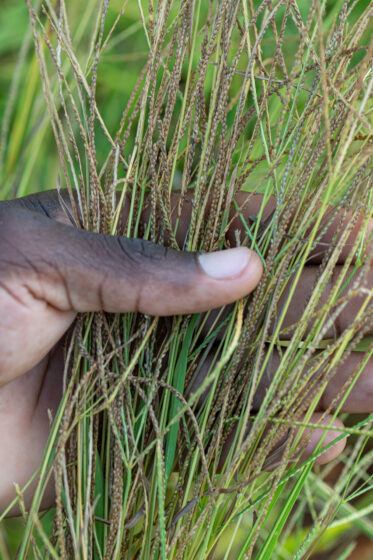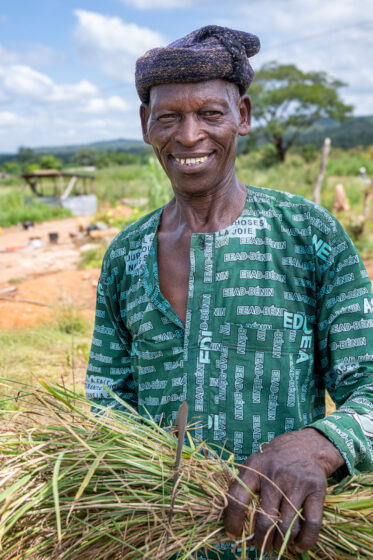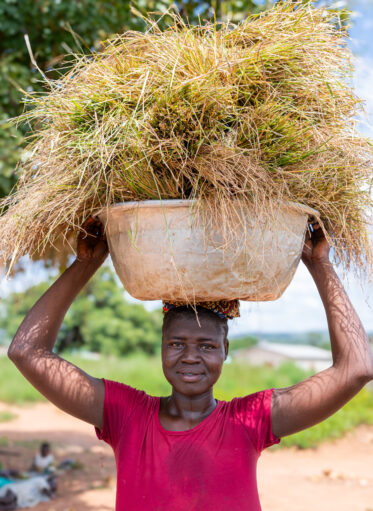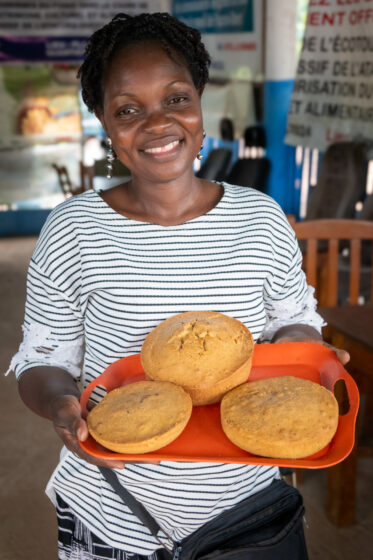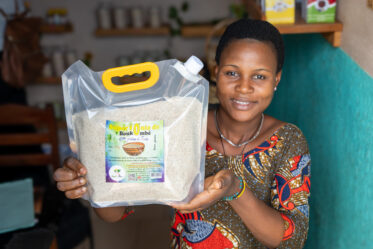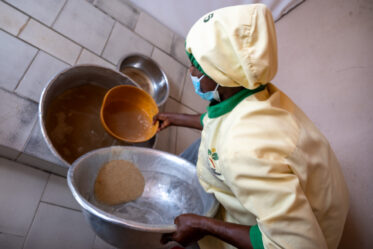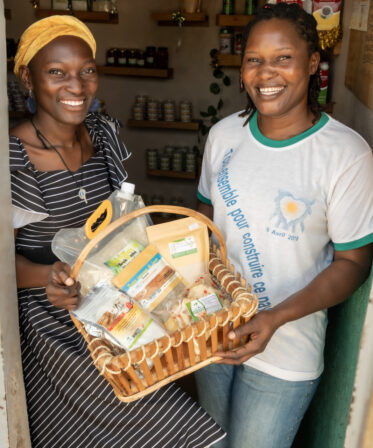It’s one of the oldest cultivated crops in Africa but you’d be forgiven if you’d never heard of fonio. I had heard of fonio’s many qualities but had never seen nor eaten it. That’s changed now. I travelled to Benin with my colleague Scott Christiansen to learn more.
Stakeholders in Benin led by the Crop Trust’s BOLDER project identified fonio as one of several priority opportunity crops. Those are crops which offer great potential in terms of food security but have been neglected by researchers and policymakers and underutilized.
Fonio is a climate-resilient crop that doesn’t require a lot of inputs to grow. It’s one of the fastest growing cereals. And its packed full of nutritious goodness. So you’d think it would be a no brainer to promote it. Fonio is prized for its very short growing cycle (sometimes as little as 6–8 weeks) and ability to grow on poor soils under harsh conditions, making it a “gap crop” for lean seasons. Because of these traits, fonio has been a fallback cereal in many marginal regions of the Sahel and savanna zones of Africa.
When Scott and I were first shown fonio we had to look hard. It seemed we were just looking at weeds. In fact, fonio is related to crabgrass which Scott and I know well as a noxious weed. We met researcher Hadid who was screening genebank accessions for performance. He took one panicle and stripped the seeds. Each seed was about half the size of a grain of rice – with hulls still on! It was hard to imagine how you could extract enough of those tiny seeds to make a meal.
We arrived in time to see Mathias, a pastor turned fonio farmer, harvest his field. A team of men laboriously used sickles to cut the stalks and then tied them in bundles. Women collected the bundles from the field. Mathias told us it was his first year of growing fonio. His late father often spoke of it so in his first year of retirement from pastoring he asked some neighbouring farmers for seed and planted his ancestral food.
Then we met farmer Ferdinand with a threshing machine on loan from the Maison du Fonio association. Ferdinand had a mound of fonio harvested three days before ready to thresh. But the thresher was broken. He said if it were working it would do a pretty good job of extracting the grains without too much loss. The traditional method of threshing would be walking over the grains to loosen them or whacking it on the ground. That can take a lot of time. Ferdinand’s wife was from fonio’s homeland in Boukombé and learned how to process fonio as a child. Together they decided to cut out the processors and package and sell their own fonio.
After the grains are threshed they are dehulled. We didn’t see that, but it can be done by a machine designed by a man named Sanoussi … but those machines are not widely available. Traditionally fonio growers would use a mortar and pestle. That’s a lot of work and a lot of losses and broken grains.
It was the cleaning that troubled us. We watched a woman endlessly wash a kilo of dehulled grains to remove husks, weed seeds and grit. It was incredibly laborious. After that it was dried in solar dryers and then any rubbish still remaining was manually removed.
As a result of the difficulties of the harvest and processing merchants need to sell fonio at a price higher than other grains. We visited Angel’s Floor. An enterprise by three sisters who saw promise in bringing fonio to the market. They process fonio received from farmers and make a variety of gluten-free products: couscous, chips and flour. Everything they make gets sold. They wish they could get more fonio.
I learned that fonio was grown not so much as a hunger food but because of its taste. I saw a fair bit of fonio in a couple of days and was eager to get some of it in my mouth. And there is just the place in Natitingou for that. A restaurant specializing in fonio. We started with a hot fonio porridge. The next day we had fonio couscous, followed with a fonio dough. And finally sweet cakes made from fonio flour. Later we bought some crispy chips made from fonio. Yum, yum, yum.
I could taste the hard toil that went into getting that fonio to the table. And after spending a few days in Benin learning about the crop, I could agree it’s a crop which shows many promising opportunities and well worth some additional attention.

